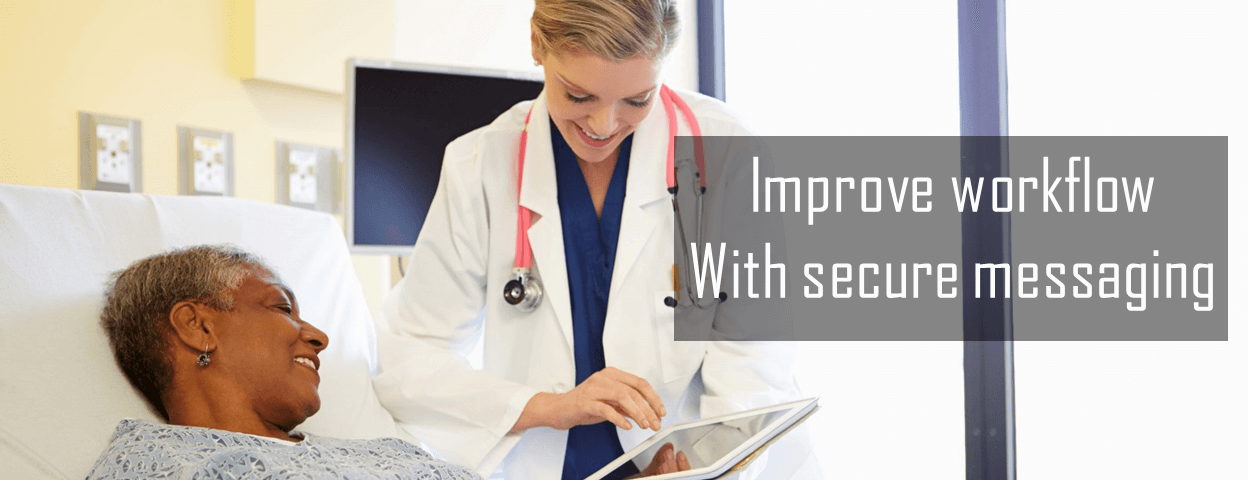Use Secure Messaging to Improve Your Hospital’s Workflow

Studying the impediments to effective hospital workflow is at the top of the agenda for many hospital administrators’ lists. This is because inefficiencies are costly. One of the major contributors to these inefficiencies is insecure text messaging. In fact, over $11 billion is wasted each year due to the inefficiency of pagers and the lack of secure texting options. By using pagers rather than secure texting options, doctors and nurses waste time in communicating. This lost time costs money.
However, by adopting the proper secure messaging technology, many of these barriers to adoption as well as workflow issues can be overcome. Furthermore, by creating a well-thought-out workflow that incorporates the secure messaging technology, much of the $11 billion in waste could be eliminated.
What is secure messaging?
Secure messaging refers to the sending of protected, sensitive patient data while complying with HIPAA requirements. Secure messaging is used to communicate with doctors, nurses or patients on relevant health information in a secure format. It can play an important role in improving patient access to health care providers. It is also critical for effective exchange of communications by doctors during hospital rounds. By enabling a secure text messaging platform in a healthcare institution, facilities enable their staff to work more efficiently while maintaining the confidentiality of a patient’s PHI.
How implementing secure messaging improves hospital workflow
One of the impediments to optimal workflow in hospitals is the use of pagers. Most paging systems utilize single-function pagers that only allow one-way communication, requiring recipients to disrupt workflow to respond to pages. Paging transmissions can also be intercepted, and the information presented on pager displays can be viewed by anyone in possession of the pager.
Smartphone-based, HIPAA-compliant group messaging applications however improve in-hospital communication. These applications save time as physicians and nurses do not need to receive messages on their pager and then respond via cellphone. By only using cellphone-based secure messaging applications, physicians and nurses have access to secure communications while providing the information security that paging and commercial cellular networks do not.
Additionally, secure messaging technologies enable persistent alerting that ensures messages aren’t dropped, missed or forgotten. By ensuring that messages are not lost, administrators do not need to waste time following up on sent messages.
How to use secure messaging to improve workflow
Ensure a sole system of adoption
There should be only one system adopted by the hospital or institution. Adoption of multiple secure messaging applications impedes communications between departments and impedes effective healthcare.
Ease of use
By opting for a system of simplicity, administrators are less likely to eschew its use. Indeed, the extent to which a person believes that using a new technology will be free of effort greatly impacts adoption. Considering how many users will need to adopt the technology, it is important that there be a relatively quick learning curve.
——————–
Conclusion
Choosing the right secure messaging can have a significant impact on workflow. The right secure messaging solution will provide more than just a pager alternative and HIPAA compliance. It will also improve workflow, ensure physicians never miss critical alerts and enhance administrative control over messaging.
Want to learn five more tactics of secure messaging implementation that will improve your workflow? Download our white paper.





